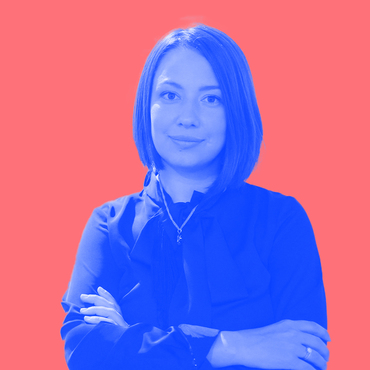Museum for Change: how one organisation helps 40 museums survive in wartime

Museum for Change is an Odesa non-governmental organisation founded by Oleksandra Kovalchuk. Oleksandra is currently the acting director of the Odesa Art Museum.
Initially, Museum for Change was created to modernise museums and help them develop. Now its main task is to save the collections, support people, and hope that the museum will not be destroyed by a Russian missile.
We talked with Oleksandra about how the organisation works, what museum workers currently need, and how the world community helps.
Currently, we help the museums of Odesa and Odesa Oblast. In order not to leave out even small institutions, we maintain contacts with the Culture Department of the Odesa Oblast Administration, which is in touch with everyone. We are also contacted by the museums from the Sumy and Chernihiv Oblasts. Of course, we prioritise them, because they are now constantly at risk.
So far, Museum for Change has signed contracts for EUR 612,000. From these funds, we have already rendered aid for EUR 400,000. They were directed to museums, libraries, and cultural centres.
What kind of support museums need today
The Odesa Art Museum was prepared for the war: we had the necessary packing materials, however, as it turned out later, they were not enough for the entire collection. So at first, when I was offered to apply for an emergency support grant from the House of Europe, I thought we did not need it. And then, I realised that we did not buy much. For example, slabs to cover windows in case of a blast wave.
Later, I realised that other museums were without any support. And it was still not easy for them to make contacts with grantmakers. In addition, it was difficult for people emotionally. I had already left Ukraine at that time, perhaps this gave me a head start to get myself together, draw up a budget, and submit an application. In our contract, it was indicated that the aid goes to five museums, but, in fact, we also supported the National Scientific Library in Odesa.
When the grant process began, the museums sent me detailed information about their needs. But the grant from the House of Europe was not enough to buy everything. We needed to look for other opportunities. This is how negotiations with international organisations began.
At the beginning of the full-scale invasion, the main request of the institutions of Odesa and Odesa Oblast was security. Packing, fire precautions, increased security, and preparation to evacuation if it is needed — that is what we responded to. But I also tried to add at least a little financial support for the workers.

About the inequality of support and the importance of retaining workers
In the first months, our priority was to preserve the collections. But it was also important to take care of the museum workers. If you do not have people able to pack it, move it, load it, and unload it, then what difference does it make on how much packing material you have?
However, a certain inequality is felt between the workers of the Ukrainian museums who left for Europe and those who remained.
For Ukrainian museum workers abroad, there are a large number of scholarships, programs, and assistance from countries that have given them shelter and the opportunity to get a job in local cultural institutions.
Ukrainian museums, which are located in dangerous zones, are closed, and workers’ salaries are cut. Since many businesses have stopped, local budgets are not filled. They cannot give funds to cultural institutions as they cut their expenses.
For example, all allowances for stressful work were removed, which is an additional 50% of salary, as well as quarterly bonuses. Nowadays, some museum workers receive less than a living wage, but they still stand guard over their institutions. However, today the situation is gradually changing, the support from international organisations is beginning to appear for those who remained in the country.
But, in addition to difficulties with salaries, there is another problem: the outflow of workers. Women go abroad, and men are taken to the front. I think we should come up with a mechanism by which museum workers would receive a salary of EUR 500, EUR 1000 in wartime, like their colleagues abroad, to be socially protected and not to decide to leave due to economic danger.

About international support and cooperation
As for financial aid from abroad, we are one of the main partners of ALIPH in Ukraine: about 20% of the funds with which they support Ukraine went through us. The function of the Museum for Change is very simple: since we understand what the budget and reports should be, we take care of the paperwork and procurement. At the same time, our coordinator Daria Diakova communicates with the directors of museums and finds out what they need.
Exchanges with the world museum community are also an important experience that our country can gain. I would like to believe that 70-80% of those currently undergoing internships and working abroad in the cultural sphere will return. Although I know two people who decided to stay in the new place.

Currently, many texts about Ukrainian culture, art, and museums are published in the international press. I talk to American officials, and they really find all this interesting and important. They begin not only to understand what museums are in Ukraine but also to get to know Ukrainian museum workers through the texts.
Awareness of our landscape is growing. This is something positive that can be found in the aftermath of war. Relations are being established, and foreign museum workers want to support Ukrainian ones. They usually do not know how, so it is great that there are our cultural figures abroad. We can help arrange this.
Museum for Change received our emergency war support. To join our community, choose a fitting open call in the opportunities catalogue, and apply.
Text: Oksana Semenik



